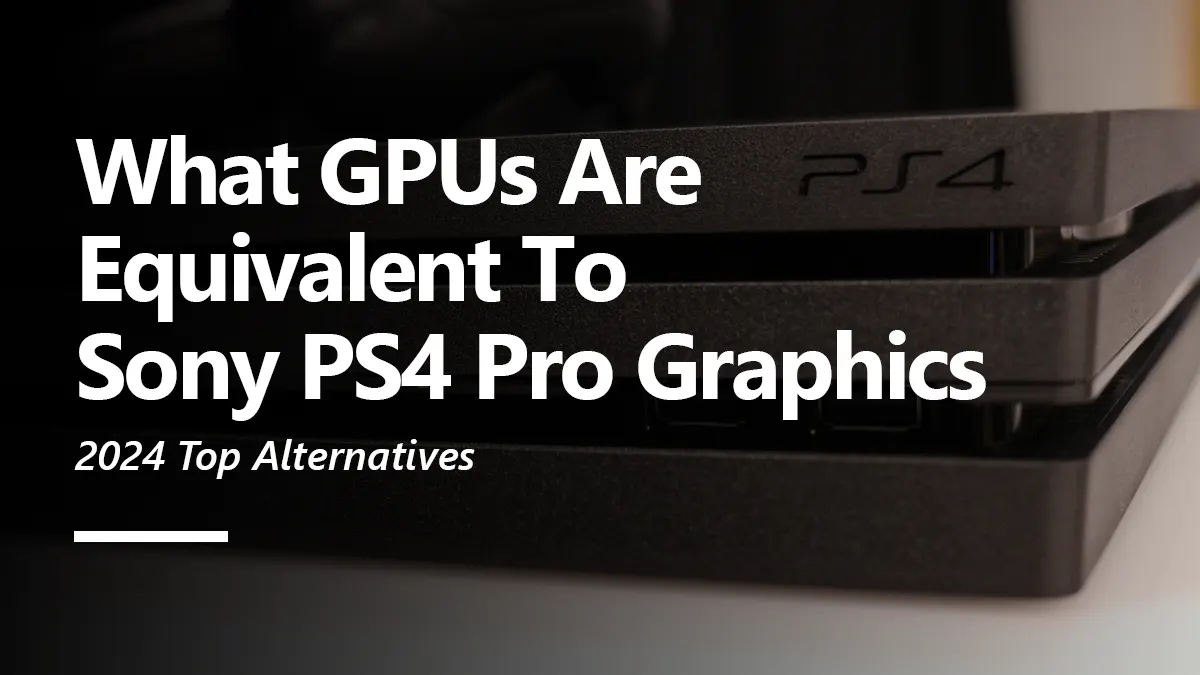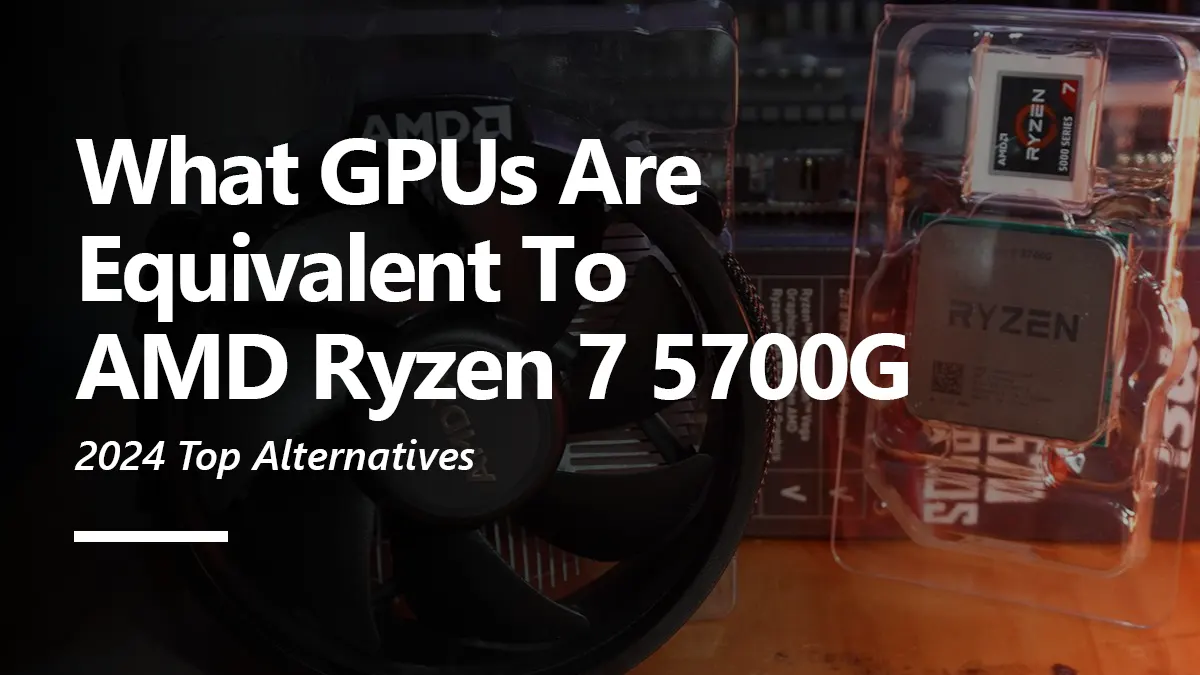Most people design gaming rigs centered around a graphics card. The RTX 40 series includes some of the best and most formidable gaming GPUs ever. For a 1440p or 2K resolution gaming experience, you are bound to consider one of the most unique available options, the RTX 4070.
The RTX 4070 is a mid-end GPU designed for the ultimate 1440p experience that comes at a somewhat higher price because of its peculiar capabilities and, of course, for being an Nvidia product. It packs a GDDR6X 12-gigabyte video memory with an astonishing core count of almost 6K CUDA cores, 46 raytracing, and more than 180 Tensor cores.
Moreover, it has generationally better tensor and RT cores at its disposal in tandem with a 2.5 GHz boosted frequency, which marks its performance similar to the high-end GPUs of the preceding generation.
However, not everyone can easily opt for the Nvidia option because of their high demand and increasing prices. Instead, we are going to look at the most worthy alternate options that you can use in place of the RTX 4070.
GPU equivalent to the RTX 4070
Perhaps the only distinguished competitors of the RTX 4070 are the RX 6950 XT and RX 7800 XT from AMD. These two GPUs give the 4070 a run for its money by presenting very optimal and robust features. They rival the 4070 at all scales except raytracing and even surpassing the 4070 in terms of VRAM aptitude.
PowerColor Radeon RX 6950 XT
The RX 6950 XT is one of AMD’s most recently launched GPUs that is made to compete with their supposedly mid-range graphics cards. Where the 4070 is focused on providing a balanced performance output, the RX 6950 XT takes it further and offers immense brute force games at 2K resolution with ease.
The RX 6950 XT is nearly equal to the RTX 4070 but lacks in certain areas. Like other AMD products, this one also caters to a pretty significant price-to-performance value that is unmatchable. It utilizes a slightly slower 16GB GDDR6 VRAM and boasts 80 ray acceleration cores with 5120 Streaming processors. Also, it is based on AMD’s 2nd Gen RDNA/7nm architecture, which is not relatively modern, but AMD suffices its present use with clever optimizations through regular driver updates.
The 6950 XT falls a bit short in performance output against the 4070 sometimes, while in other instances, it surpasses by a notable margin due to higher VRAM. Nevertheless, despite having a lower clock speed, the value that the 6950 XT delivers is just too good to overlook.
| Feature | PowerColor Radeon RX 6950 XT | NVIDIA GeForce RTX 4070 |
|---|---|---|
| Architecture | RDNA 2.0 | Ada lovelace |
| Core Clock (MHz) | 1860 MHz | 1920 MHz |
| Boost Clock (MHz) | 2435 MHz (+5%) | 2475 MHz |
| CUDA Cores | 5120 | 5888 |
| Memory Type | GDDR6 | GDDR6X |
| Memory Size (GB) | 16 GB | 12 GB |
| Memory Bus Width (bits) | 256 bit | 192 bit |
| Memory Speed (Gbps) | 2250 MHz 18 Gbps effective | 1313 MHz 21 Gbps effective |
| TDP (Watts) | 335 W | 200 W |
| DirectX Version | 12 Ultimate (12_2) | 12 Ultimate (12_2) |
| OpenGL Version | 4.6 | 4.6 |
| VR Ready | - | - |
| Ray Tracing Cores | 80 | 46 |
| Ports | 1x HDMI 2.1a 3x DisplayPort 1.4a | 1x HDMI 2.1 3x DisplayPort 1.4a |
| Price | $599.99 | $731.58 |
ASUS TUF Gaming Radeon RX 7800 XT
Another notable entity for this conversation is the recently premiered RX 7800 XT graphics cards that have garnered much attention for their considerate valuation, all while based on AMD’s progressive RDNA 3.0 architecture.
It also contains a higher capacity GDDR6 16 Gig memory with a 256-bit bus and can run at a frequency of 2.4 GHz without overclocking. It has a lower core number of only 60 ray accelerators and 3888 Streaming processors.
However, it benefits from better optimization for modern usage. It would utilize AMD’s latest deep-learning applications, such as FSR 3 and anti-aliasing, in select titles to yield a finer output. Furthermore, it undercuts most of its competition by rising to the occasion with immensely improved value.
| Feature | ASUS TUF Gaming Radeon RX 7800 XT | NVIDIA GeForce RTX 4070 |
|---|---|---|
| Architecture | RDNA 3.0 | Ada lovelace |
| Core Clock (MHz) | 1295 MHz | 1920 MHz |
| Boost Clock (MHz) | 2430 MHz | 2475 MHz |
| CUDA Cores | 3840 | 5888 |
| Memory Type | GDDR6 | GDDR6X |
| Memory Size (GB) | 16 GB | 12 GB |
| Memory Bus Width (bits) | 256 bit | 192 bit |
| Memory Speed (Gbps) | 2438 MHz 19.5 Gbps effective | 1313 MHz 21 Gbps effective |
| TDP (Watts) | 263 W | 200 W |
| DirectX Version | 12 Ultimate (12_2) | 12 Ultimate (12_2) |
| OpenGL Version | 4.6 | 4.6 |
| VR Ready | - | - |
| Ray Tracing Cores | 60 | 46 |
| Ports | 1x HDMI 2.1a 3x DisplayPort 2.1 | 1x HDMI 2.1 3x DisplayPort 1.4a |
| Price | $469.99 | $731.58 |
Conclusion
The RTX 4070 is undoubtedly the best GPU of its cadence. However, due to its high demand, its pricing has seen an incremental rise, making it harder and undesirable to get by many PC gaming enthusiasts.
Though the 4070 shows improved power and inventive work efficiency, for those simply looking to game and record with a genuine and immersive 1440p experience, the aforementioned AMD options are pertinent.
Especially for raytracing, the RTX cards are considered the best, and AMD hasn’t been able to crack that code. But, other than that, you can build a robust PC around these Radeon cards, too, as long as you couple them with a good processor and other essential hardware.




